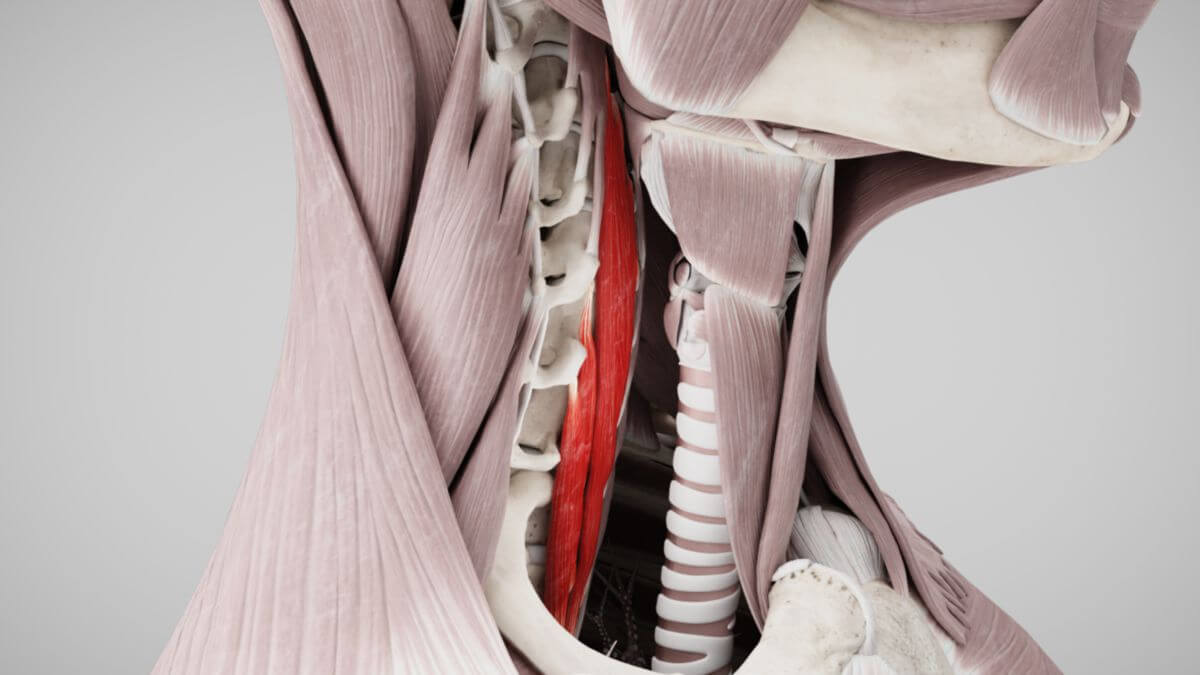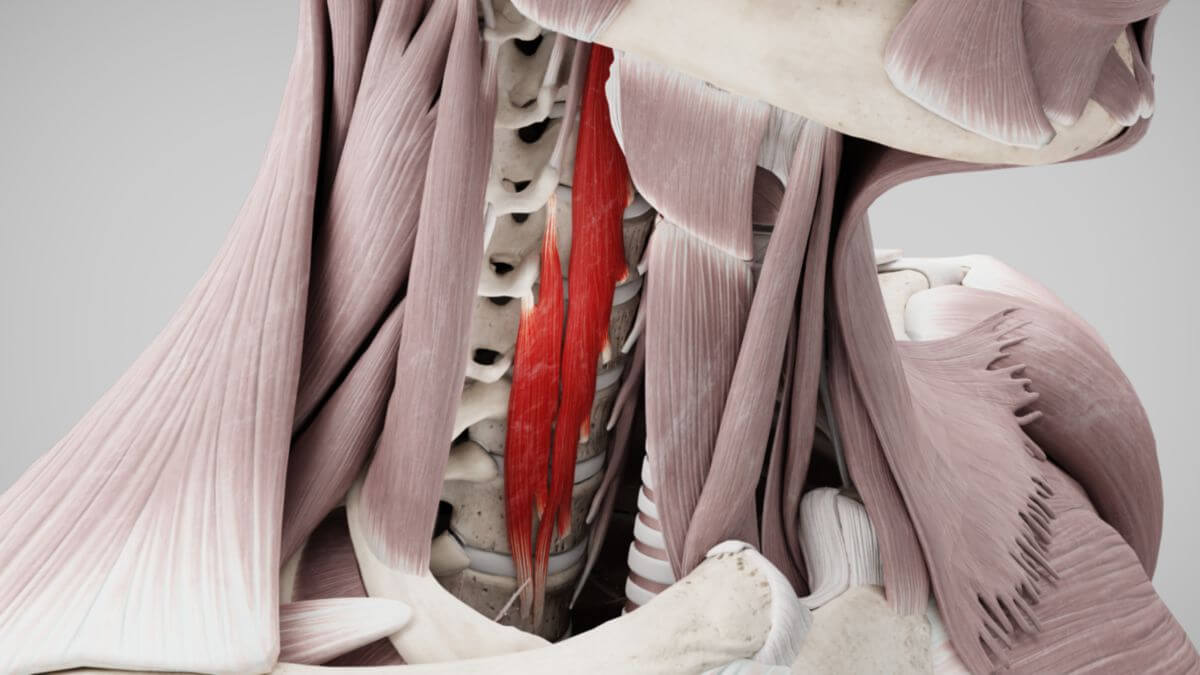Corpus: Longus colli muscle: Unterschied zwischen den Versionen
(Englische Seite angelegt) |
K (Schützte „Corpus:Longus colli muscle“ ([Bearbeiten=Nur Administratoren erlauben] (unbeschränkt) [Verschieben=Nur Administratoren erlauben] (unbeschränkt))) |
(kein Unterschied)
| |
Version vom 21. Juli 2024, 20:55 Uhr
This text has been translated by an AI and may sound raw. It will be reviewed shortly. Thank you for your patience!
This text has been translated by an AI and may sound raw. It will be reviewed shortly. Thank you for your patience!
Definition
The longus colli muscle is a muscle that is part of the prevertebral neck musculature.
Course
The longus colli muscle runs along the front of the spine, between the atlas and the 3rd thoracic vertebra. It can be divided into three parts:
- Pars obliqua superior
- Pars recta (medial part)
- Pars obliqua inferior
Pars obliqua superior
The pars obliqua superior originates at the anterior tubercles of the transverse processes of the 3rd, 4th and fifth cervical vertebrae and then extends obliquely medially. It inserts with a narrow tendon on the anterior tubercle of the atlas (1st cervical vertebra).
Pars recta
The vertical pars recta originates from the anterior surfaces of the vertebral bodies of the 5th to 7th cervical vertebrae and the 1st to 3rd thoracic vertebrae. They insert on the anterior surfaces of the 2nd to 4th cervical vertebrae.
Pars obliqua inferior
The pars obliqua inferior is the smallest part of the muscle. It originates on the anterior surfaces of the vertebral bodies of the 1st to 3rd thoracic vertebrae. From here the fibres extend obliquely laterally and insert at the anterior tubercles of the transverse processes of the 5th and 6th cervical vertebrae.
Innervation
The longus colli muscle is innervated by the ventral rami of the spinal nerves C2-C7 (C1-C8) or via the prevertebral branches of the cervical plexus.
Function
The longus colli muscle causes flexion (bending) of the head and neck forwards. When contracted on one side, it produces a rotation to the same side (pars superior) or to the opposite side (pars inferior).


